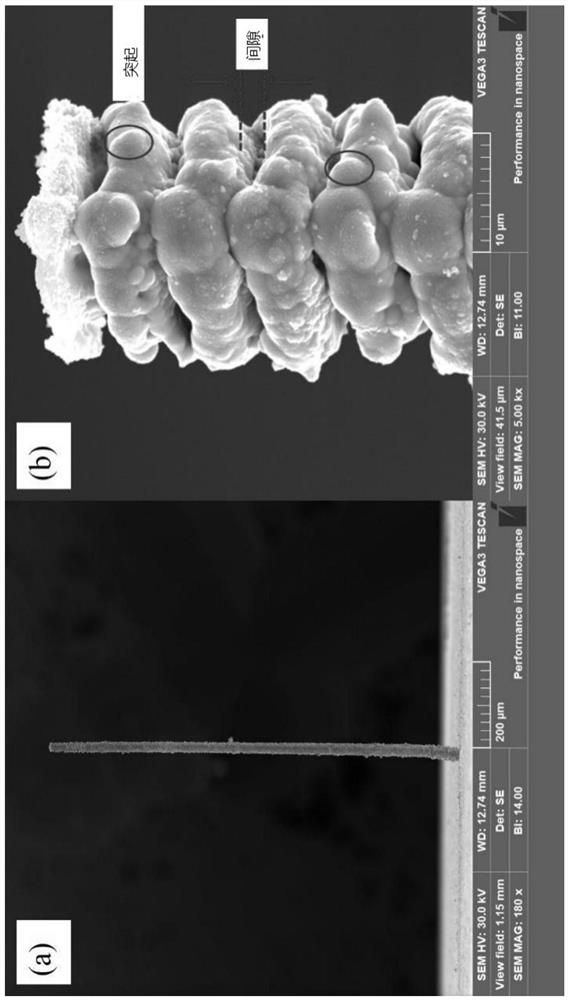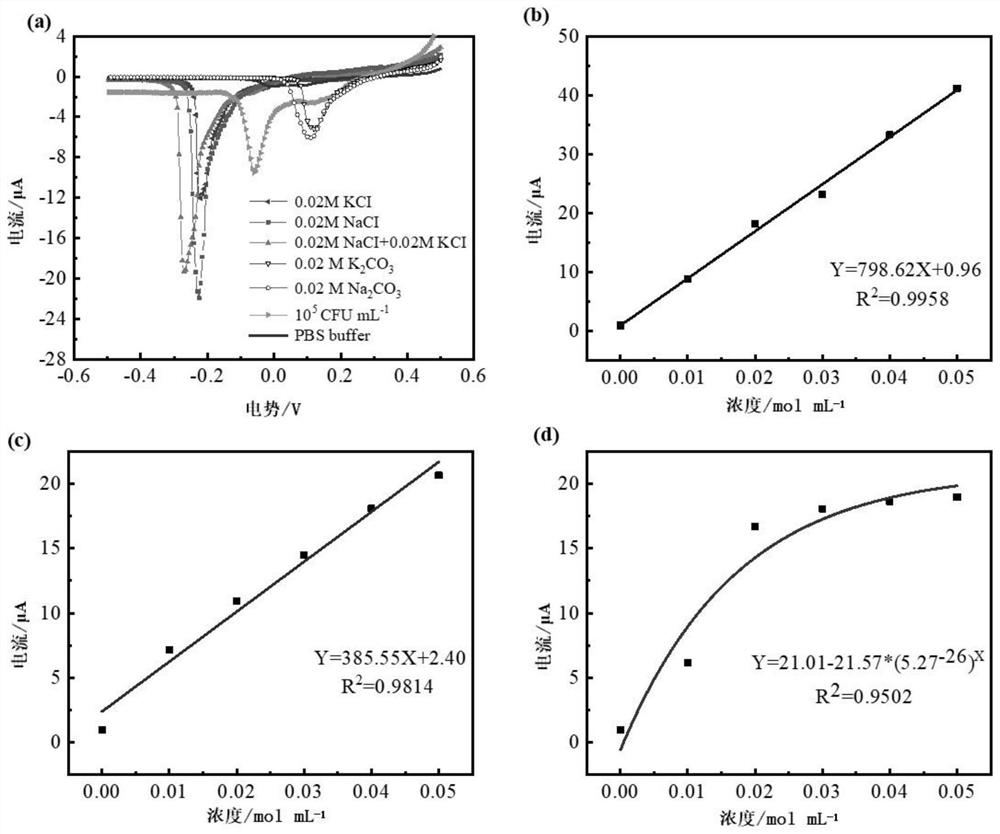Microelectrode sensor for detecting staphylococcus aureus as well as preparation method and application method of microelectrode sensor
A staphylococcus and microelectrode technology, applied in the field of biosensors, can solve problems such as being unsuitable for bedside detection, expensive instruments, and high professional requirements, and achieve the effects of increasing electron exchange capacity, wide linear range, and high specificity
- Summary
- Abstract
- Description
- Claims
- Application Information
AI Technical Summary
Problems solved by technology
Method used
Image
Examples
Embodiment 1
[0042] A microelectrode sensor for detecting Staphylococcus aureus, the microelectrode sensor is a three-electrode system sensor, the counter electrode is a platinum wire electrode, the reference electrode is an Ag / AgCl electrode, and the working electrode is chitosan, phthalate Silver microelectrodes modified with phenol and Staphylococcus aureus aptamers.
[0043] In this embodiment, the working electrode is based on a silver microelectrode, chitosan is coated on the surface of the silver microelectrode, and catechol and Staphylococcus aureus aptamer are respectively grafted onto the chitosan.
[0044] In this example, based on the principle of microcapacitance, a modified layer was prepared on the surface of the electrode to amplify the detection signal; an ultrasensitive microelectrode sensor for the detection of Staphylococcus aureus was constructed. The electrode modification process is the deposition of chitosan, grafting of catechol and immobilization of aptamers. Sil...
Embodiment 2
[0049] A kind of preparation method of the microelectrode sensor that detects staphylococcus aureus in preparation embodiment 1, such as image 3 shown, including the following steps:
[0050] (1) A silver microelectrode is used as the working electrode, and a platinum wire is used as the auxiliary electrode to construct a dual-electrode system. Chitosan is electrochemically deposited on the surface of the working electrode to obtain a Chi-Ag electrode;
[0051] (2) the Chi-Ag electrode obtained in step (1) is used as a working electrode, with Ag / AgCl as a reference electrode, and platinum wire as a counter electrode, electrochemically grafting catechol on the surface of the Chi-Ag electrode; By applying a voltage of 0.6V for 500s through a CHI660e electrochemical workstation, catechol was grafted onto chitosan; a Cat-Chi-Ag electrode was obtained. The Cat-Chi-Ag electrode was washed with ultrapure water and dried with nitrogen flow;
[0052] (3) Soak the Cat-Chi-Ag electrod...
Embodiment 3
[0056] A detection method based on the microelectrode sensor detecting Staphylococcus aureus in embodiment 1, comprises the following steps:
[0057] 1) Fc-Ru in microelectrode sensor 3+ / 2+ Add the concentration standard solution of Staphylococcus aureus series into the dual-electron medium solution, use cyclic voltammetry at room temperature to obtain the peak current of the corresponding silver electrode specific response signal of each concentration standard solution, according to the concentration of Staphylococcus aureus and The relationship between the peak currents establishes the standard curve equation;
[0058] 2) Take or prepare the sample solution to be tested;
[0059] 3) adopting cyclic voltammetry to detect the peak current of the characteristic peak to be measured for the sample solution to be tested in step 2);
[0060] 4) Bring the peak current obtained in step 3) into the standard curve equation in step 1) to calculate the concentration of Staphylococcus a...
PUM
| Property | Measurement | Unit |
|---|---|---|
| diameter | aaaaa | aaaaa |
| diameter | aaaaa | aaaaa |
| diameter | aaaaa | aaaaa |
Abstract
Description
Claims
Application Information
 Login to View More
Login to View More - R&D
- Intellectual Property
- Life Sciences
- Materials
- Tech Scout
- Unparalleled Data Quality
- Higher Quality Content
- 60% Fewer Hallucinations
Browse by: Latest US Patents, China's latest patents, Technical Efficacy Thesaurus, Application Domain, Technology Topic, Popular Technical Reports.
© 2025 PatSnap. All rights reserved.Legal|Privacy policy|Modern Slavery Act Transparency Statement|Sitemap|About US| Contact US: help@patsnap.com



